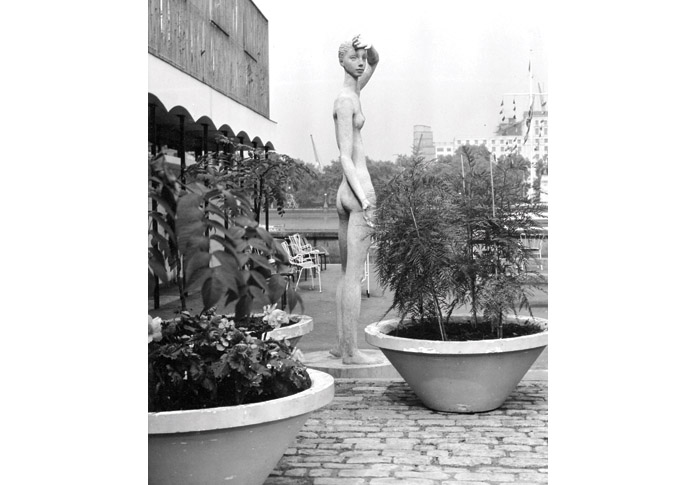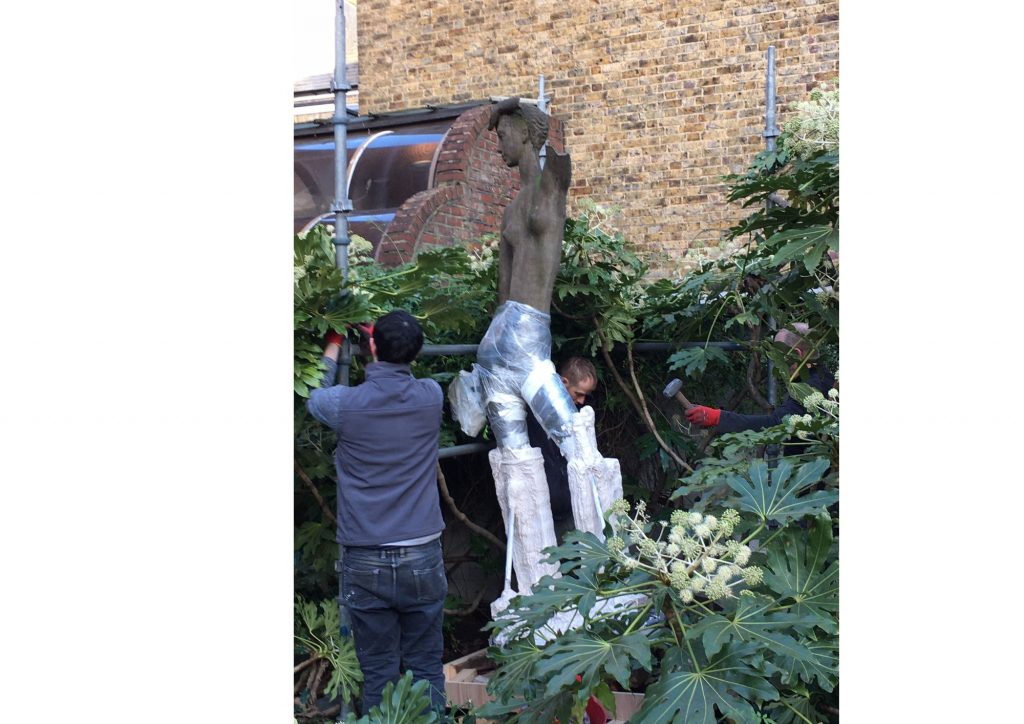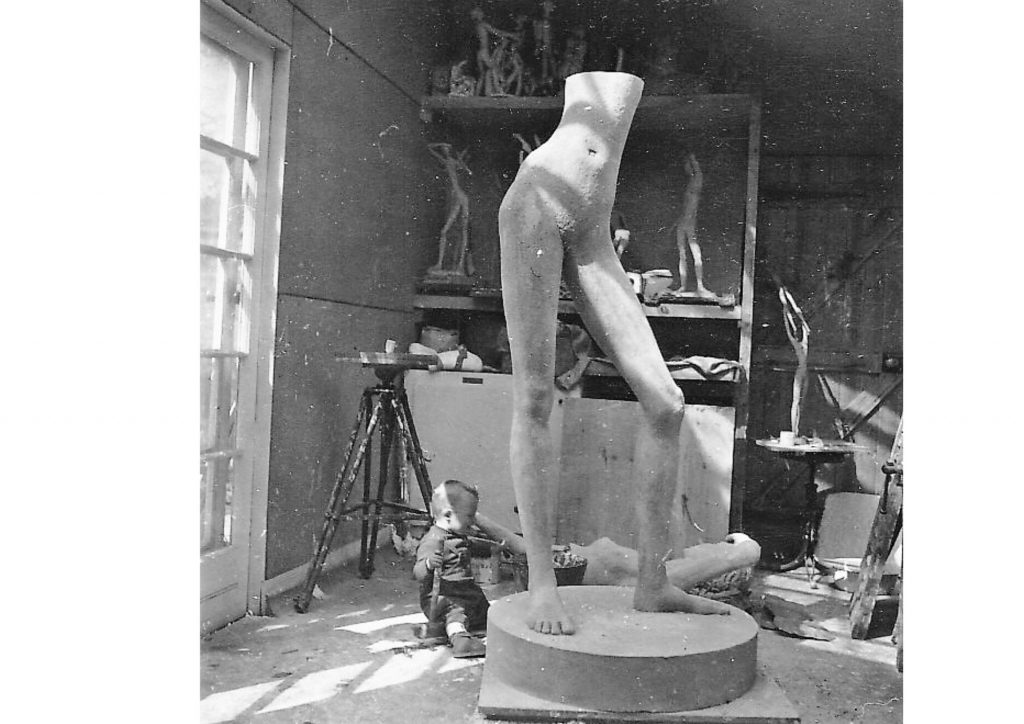Festival statue found in garden given to museum
A new home for twin of artwork created for Festival of Britain
Monday, 5th June 2023 — By Dan Carrier

Youth in place at the South Bank at the Festival of Britain in 1951 [Henrion family archive]
SHE has borne witness to the comings and goings of the Royal Free Hospital for 70 years, gazing out from beneath a fig tree in a front garden in Pond Street.
And now the remarkable sculpture by a leading 20th-century artist has been gently raised from its resting place in South End Green, given some tender loving care by restorers, and found a new, more congenial home with the Museum of London.
Daphne Hardy Henrion, who died in 2003, created a piece called Youth for the 1951 Festival of Britain.
The sculptor had been commissioned by the Highgate-based architect Leonard Manassah to create an artwork that would sit outside his ’51 Bar on the South Bank.
The museum’s curator Francis Marshall said: “She made a cast for the festival, and then a second. It is not unusual for this to happen – her contemporaries such as Barbara Hepworth and Henry Moore did this – and it seems she kept a version.”
Henrion had become a major figure in the British post-war art scene. She won a gold medal at the Royal Academy aged 19 and after touring Europe, she returned to London from Paris as the Nazis invaded in 1940, where she met and married the designer FHK Henrion.

Cast being prepared for removal to Museum [Museum of London]
She was later commissioned to create a memorial to the victims of the Belsen concentration camp after the war ended. How the second version of the festival sculpture came about is lost in the mists of time, said Mr Marshall.
One theory is the artist was asked to make two versions using different materials for the organisers to choose from.
Mr Marshall said: “As far as we can tell, the cast for the festival site was made out of a form of concrete. We do not quite understand the material the second piece is made of. “It appears to be a form of ceramic. At the time, Henrion, like so many sculptors, was experimenting and looked for new materials.”
The move from a perch under a fig tree by a C11 bus stop to a temperature- controlled, carefully lit museum environment came about when Sarah Gaventa, an independent curator who is an expert in the lost art of the Festival of Britain, starting searching for the piece.

Youth in process of being casted for Festival of Britain [Henrion family archive]
After speaking with the family, she discovered they were looking for a permanent home – and so contacted the museum. Manassah loved the piece but when the festival was finished, the question as to what would happen to the multitude of artworks had to be decided. Some pieces were taken to the various new towns being built around Britain and others stored.
The original Youth was placed in the garden of the home he designed for his family in Bacons Lane, Highgate, with the second heading to South End Green. The festival harks back to a special moment in London’s past, adds Mr Marshall.
He said: “London has a long history of public art, all of which add to the culture of the city. Youth in particular highlights a time in London’s history where art was at the core of a national celebration, seeing rejuvenation to a country devastated by war.”

Cast in situ at 35 Pond Street [Henrion family archive]
And Henrions’ son, Paul, added the family were delighted their mother’s work would be well looked after.
He said: “We look forward to seeing her after she has been restored. Youth will be given a new lease of life and it is good to know there will be an opportunity for others to enjoy this sculpture in the future.”
